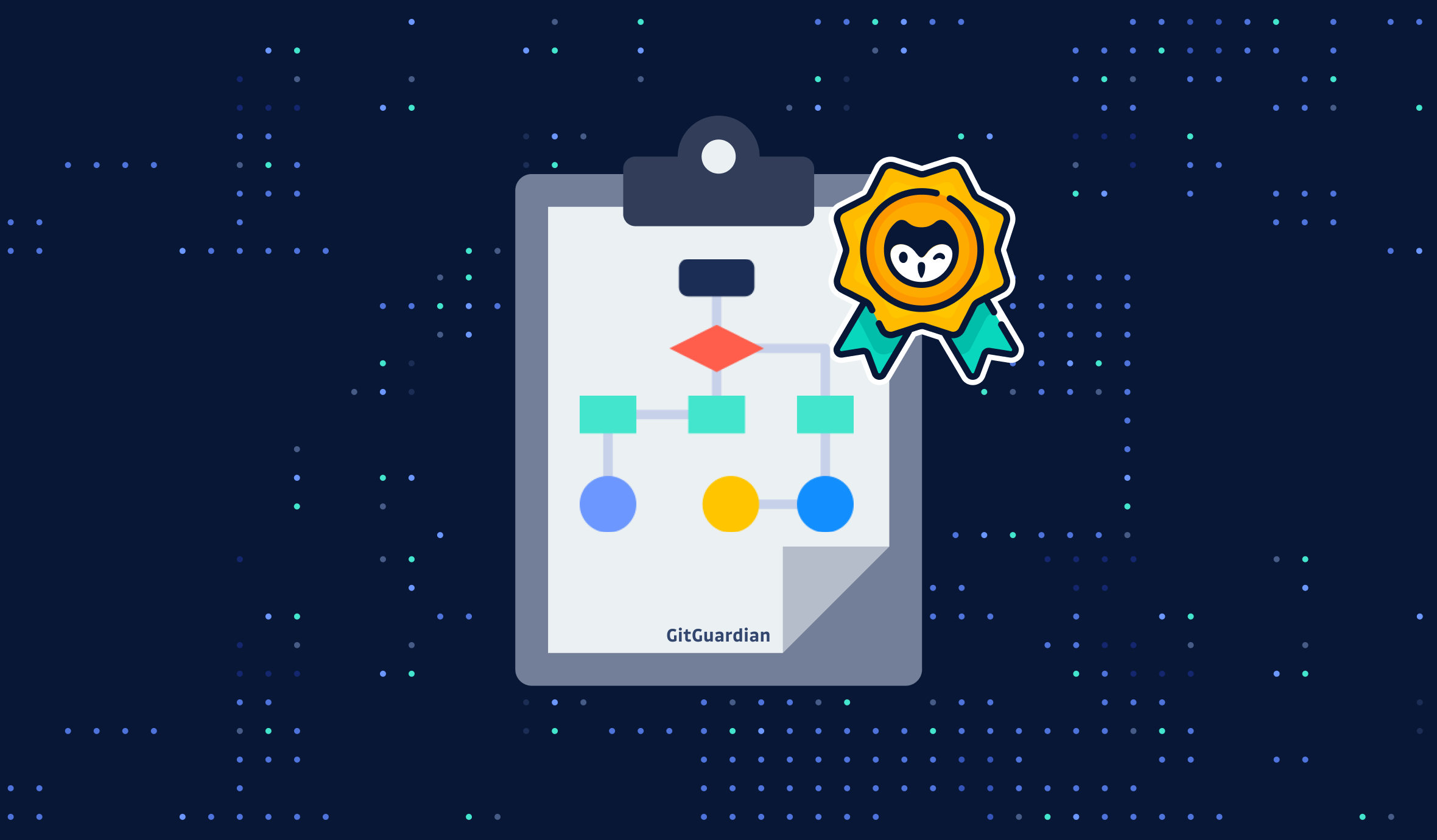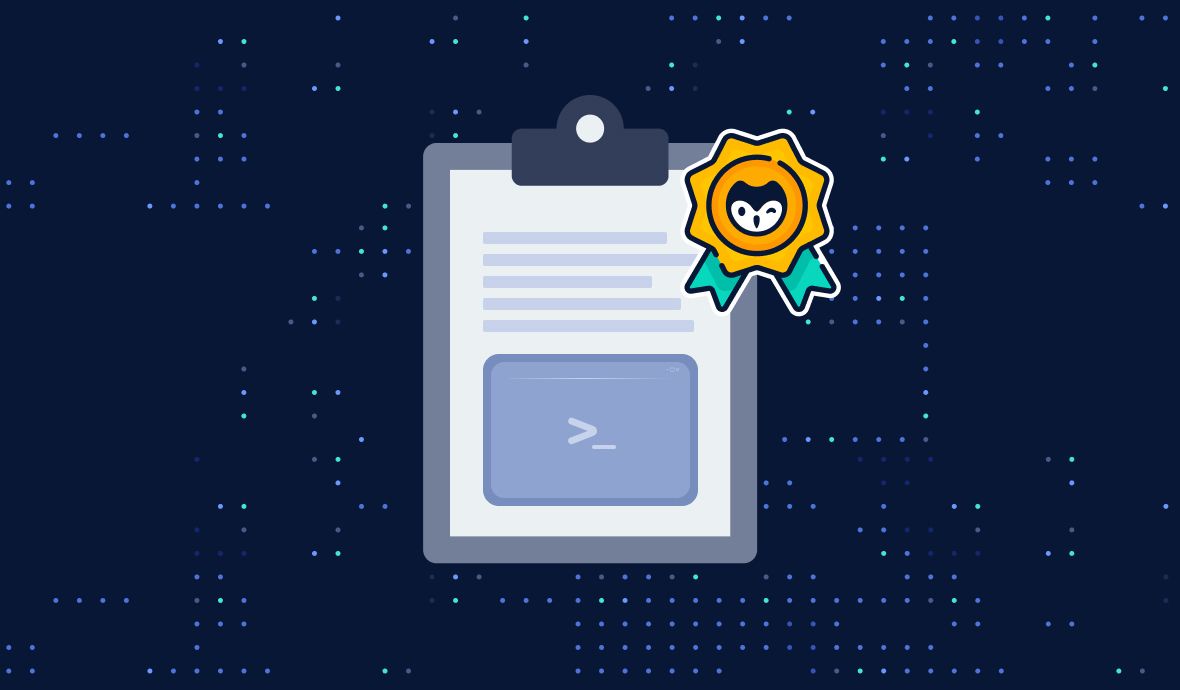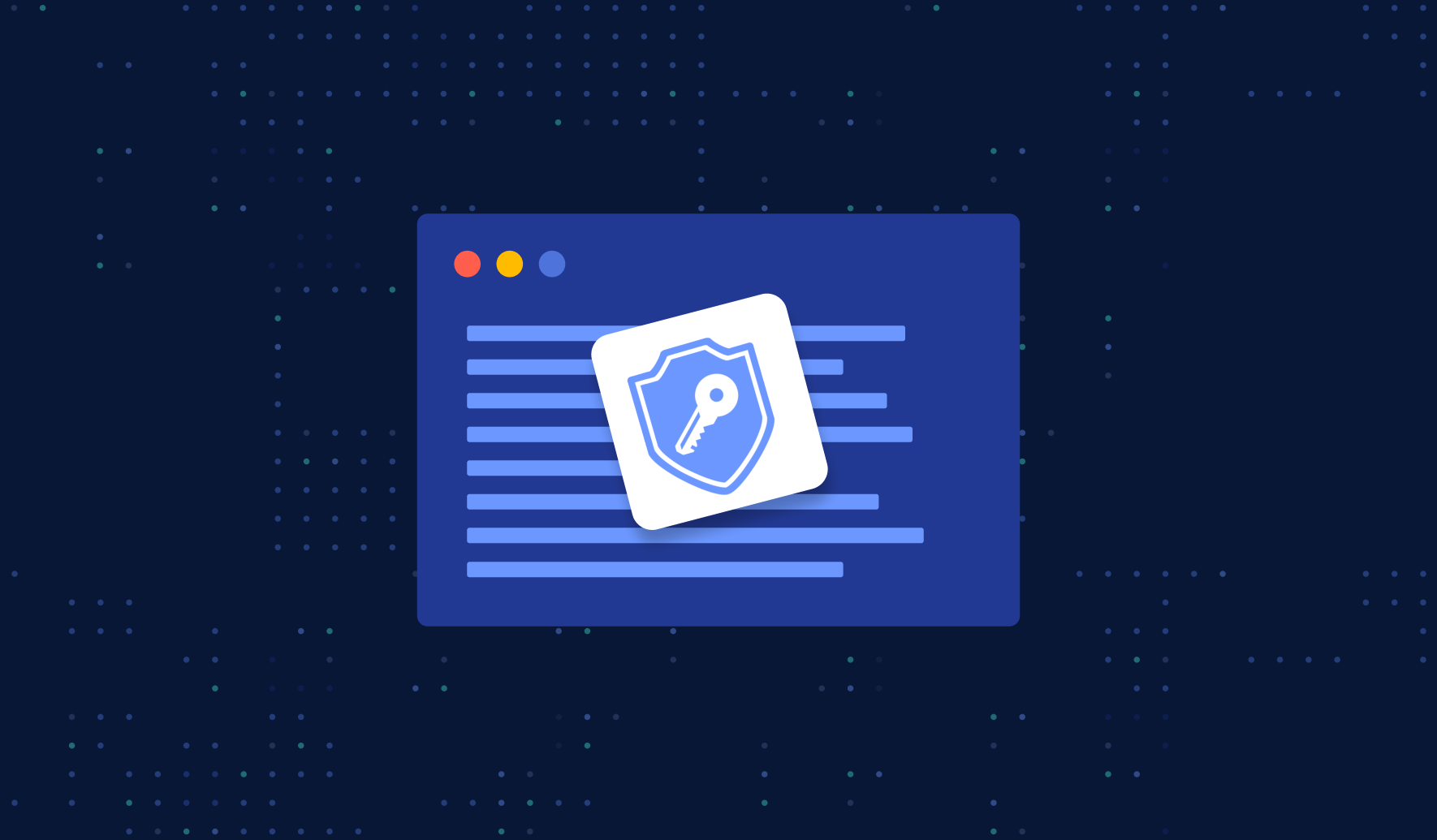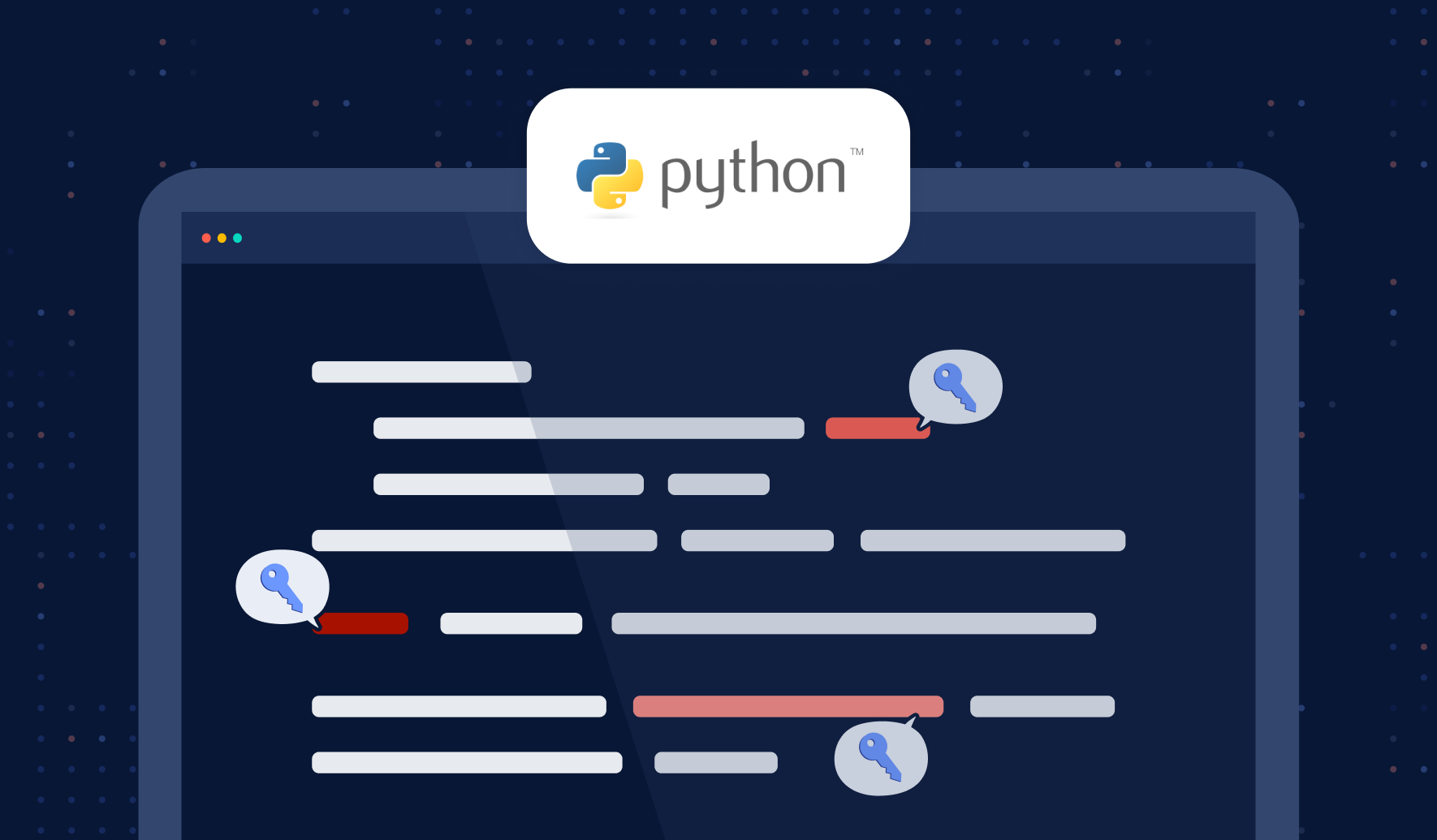- This guide covers secure patterns for managing python secrets: .env/JSON files, environment variables, cloud secret managers, and KMS solutions like HashiCorp Vault.
- Includes best practices for secret rotation, secure token generation, and safe handling in Jupyter notebooks.
- Prioritize externalized, auditable secrets management to minimize attack surface and maintain security posture.
DevOps engineers must handle secrets with care. In this series, we summarize best practices for leveraging secrets with your everyday tools.
We live in a world where applications are used to do everything, be it stock trading or booking a salon, but behind the scenes, the connectivity is done using secrets. Secrets such as database passwords, API keys, tokens, etc., must be managed appropriately to avoid any breach.
The need for managing secrets is critical for any organization. Secrets can be leaked in many ways, including through version control systems (never hardcode any secrets in your code!), private messages, email and other communication channels. If secrets are leaked, it can lead to a loss of trust, credibility, and even business (you can learn why here). In some cases, leaked secrets can also lead to legal action. That's why it's so important to have a plan for managing secrets.
In this post, we will discuss 4 different ways to manage secrets in Python efficiently.

Pre-requisites
Before getting started, below are a few things to keep in mind to avoid any issues later.
- Python & pip installed on your machine
- Understanding of Python & CLI
- Python IDE such as PyCharm or VS Code
- Basic understanding of Cloud
4 Ways to Manage Secrets in Python
In this section, we will discuss 4 different ways to manage your secrets in Python.
1. From a file
Using an .env file
The .env file is a file used to store environment variables in Python. Environment variables are variables set outside of the Python code and are used to configure the Python code. The .env file is typically used to store secret keys and passwords.
We will use the python-dotenv package for accessing the content of the .env file. To get started, first install the package using the following command.
$ pip install python-dotenvCreate a .env file for testing purposes and paste the following secrets:
API_KEY=test-key
API_SECRET=test-secretOf course, this file should not be committed to your git repo! Otherwise, it would be versioned and readable even after you delete it.
Add this line to your .gitignore file:
.envAlready committed the file? No worries, follow the instructions here:

Once done, create a main.py file and paste the below-mentioned code snippet. In this code, we are using the load_dotenv() function to load content from the .env file.
from dotenv import load_dotenv
import os
load_dotenv()
api_key = os.getenv("API_KEY")
api_secret = os.getenv("API_SECRET")
print("API_KEY: ", api_key)
print("API_SECRET: ", api_secret)
We can also use dotenv_values() function, which converts the secrets into a dictionary. Secrets can be accessed by using the following code snippet:
from dotenv import dotenv_values
secrets = dotenv_values(".env")
def main():
print(secrets["API_KEY"])
print(secrets["API_SECRET"])
if __name__ == "__main__":
main()
When working on a large project, you may find that you need multiple .env files. For example, you may have a .env file for your local development environment and a .env.dev file for your cloud development production environment. The following code snippet can be helpful if you have multiple env files.
from dotenv import dotenv_values
secrets = dotenv_values(".env")
local_secrets = dotenv_values(".env.dev")
def main():
print(secrets["API_KEY"])
print(local_secrets["API_SECRET"])
if __name__ == "__main__":
main()
Using a JSON file
To keep the secrets more organized, you can also use a JSON file. Let's create a secrets.json file and paste the following secrets into it.
{
"db": {
"host": "localhost",
"port": 27017,
"name": "test"
},
"server": {
"host": "localhost",
"port": 3000
}
}Now that we have the JSON file ready, let’s write a function to access secrets from the file:
# main.py
import json
def get_value_from_json(json_file, key, sub_key):
try:
with open(json_file) as f:
data = json.load(f)
return data[key][sub_key]
except Exception as e:
print("Error: ", e)
print(get_value_from_json("secrets.json", "db", "host")) # prints localhost
2. Using Environment Variables
Environment variables are variables that are set by the operating system or a specific user and are used by programs to determine various settings. We can use these variables to store our secrets and then access them in our program. You can use the following syntax to create an environment variable in macOS or a Linux machine.
$ export variable_name=value
$ export API_KEY_TEST=dummykeyOn a Windows machine, you use GUI to add environment variables or use the following command to add a variable.
$ setx [variable_name] “[value]”You can use the os package to access the os environment variable. Below mentioned is the sample code:
import os
# Get the secret key from the environment
secret_key = os.environ.get('api_key_test')
print(secret_key) // prints dummykeySecrets at the command line should be handled with special care too! Have a look at the best practices with this:

3. Use a Cloud Secrets Manager
Most cloud service providers offer an inbuilt secrets manager that can be used to create and use secrets across cloud infrastructure. Following the secret managers offered by cloud providers:
- AWS Secrets Manager
- Secret Manager (By Google Cloud)
- Azure Key Vault
AWS Secrets Manager is widely used across the industry. Let’s write a function to create and access a secret in AWS using Boto3.
import boto3
def fetch_secret_from_aws(secret_name):
try:
session = boto3.session.Session()
client = session.client(service_name='secretsmanager', region_name='us-east-1')
get_secret_value_response = client.get_secret_value(SecretId=secret_name)
return get_secret_value_response['SecretString']
except Exception as e:
print(e)
return None
def create_secret_in_aws(secret_name, secret_value):
try:
session = boto3.session.Session()
client = session.client(service_name='secretsmanager', region_name='us-east-1')
client.create_secret(Name=secret_name, SecretString=secret_value)
return True
except Exception as e:
print(e)
return False
4. Using a KMS
A KMS is a key management system that is used to manage cryptographic keys. It is typically used in organizations in order to centrally manage and secure keys. A KMS can be used to generate, store, and distribute keys. It can also be used to revoke keys and to monitor key usage.
KMS is a convenient way to centrally manage the keys used by your applications and services and helps to ensure that only authorized users have access to them.
Hashicorp Vault is one of the best open-source KMS available in the market that offers a number of features and benefits, including the ability to manage secrets and keys across multiple environments, strong security controls, and good scalability.
Let’s write a function to read and write secrets to a specific path in the vault.
import hvac
def read_secret_from_vault(secret_path, token, secret_name):
try:
client = hvac.Client(
url='http://localhost:8200',
token=token,
)
read_response = client.secrets.kv.read_secret_version(path=secret_path)
return read_response['data']['data'][secret_name]
except Exception as e:
print(e)
return None
def write_secret_to_vault(secret_path, token, secret_name, secret_value):
try:
client = hvac.Client(
url='http://localhost:8200',
token=token,
)
create_response = client.secrets.kv.v2.create_or_update_secret(
path=secret_path,
secret={secret_name: secret_value},
)
return create_response
except Exception as e:
print(e)
return None
Understanding the Python Secrets Module
The Python secrets module, introduced in Python 3.6, provides cryptographically strong random number generation specifically designed for security-sensitive applications. Unlike the standard random module which uses pseudo-random generators suitable for modeling and simulation, the secrets module accesses your operating system's most secure randomness sources.
The module offers several key functions for generating secure tokens: token_bytes() returns random bytes, token_hex() provides hexadecimal strings, and token_urlsafe() creates URL-safe Base64-encoded strings. For random selection, secrets.choice() securely picks elements from sequences, while randbelow() generates integers within specified ranges. The compare_digest() function performs constant-time string comparisons to prevent timing attacks.
import secrets
# Generate secure tokens
api_token = secrets.token_urlsafe(32)
session_id = secrets.token_hex(16)
# Secure random selection
secure_password_char = secrets.choice('abcdefghijklmnopqrstuvwxyz')
When generating tokens for security purposes, the module recommends using at least 32 bytes (256 bits) of randomness to resist brute-force attacks. This makes the secrets module essential for creating API keys, session tokens, and other security-critical random values in Python applications.
Advanced Security Considerations for Python Secrets
Beyond basic secrets storage, Python applications require sophisticated security measures to protect sensitive data throughout its lifecycle. Implementing proper secret rotation, access logging, and encryption at rest ensures comprehensive protection against various attack vectors.
The secrets.compare_digest() function prevents timing attacks by performing constant-time comparisons, essential when validating API keys or authentication tokens. This function should replace standard string comparison operators when dealing with security-sensitive data:
import secrets
def validate_api_key(provided_key, stored_key):
return secrets.compare_digest(provided_key, stored_key)For applications requiring high-entropy passwords, combine the secrets module with string manipulation to create complex credentials meeting specific requirements. Consider implementing secret validation patterns that verify entropy levels and character complexity before accepting user-provided secrets.
Memory management becomes critical when handling secrets in Python. Use techniques like immediately overwriting variables containing sensitive data and avoiding string concatenation that might leave traces in memory. Integration with hardware security modules (HSMs) or secure enclaves provides additional protection for the most sensitive applications, ensuring cryptographic operations occur in tamper-resistant environments.
Wrapping it up
Managing secrets is an essential part of application development. When developers hardcode secrets in cleartext into their applications, it creates a potential security breach. An attacker can use those secrets to access sensitive data if those secrets are discovered.
Another alternative to the proposed methods here is to check secrets into source code and share them with your team encrypted. This can be a very flexible solution if you learn how to leverage a tool such as Mozilla SOPS. To learn more about SOPS and get started using it, read this tutorial:

FAQs
What are the most secure methods for managing secrets in Python applications?
The most secure methods include using environment variables, external secrets files excluded from version control, cloud secrets managers such as AWS Secrets Manager, Azure Key Vault, or GCP Secret Manager, and enterprise-grade tools like HashiCorp Vault. Avoid hardcoding secrets in code and enforce secret rotation, auditing, and least-privilege access to minimize exposure risk.
How does the Python secrets module differ from the random module for generating secure tokens?
The secrets module provides cryptographically secure random number generation suitable for generating API tokens, passwords, and session keys. The random module is deterministic and optimized for simulations, making it unsuitable for cryptographic use because its output can be predicted by attackers.
What are best practices for handling secrets in Jupyter notebooks?
Never embed secrets directly in notebook cells. Use secure entry mechanisms like getpass, environment variables, or cloud-based secret stores. Exclude secret files with .gitignore and enforce IAM policies when using managed notebooks. This prevents accidental exposure in notebook metadata or version control.
How can organizations prevent accidental exposure of Python secrets in version control systems?
Add secrets files (e.g., .env, secrets.json) to .gitignore and enforce automated pre-commit scanning using tools like GitGuardian. If a secret is committed, immediately rotate it and scrub history with tools such as git filter-repo, filter-branch, or BFG Repo-Cleaner.
What advanced security measures should be implemented when managing secrets in Python at scale?
Implement automated rotation, centralized auditing, encryption at rest, and use secrets.compare_digest() to prevent timing attacks. For high-value secrets, use HSMs or secure enclaves. Ensure secrets are zeroized promptly from memory and not stored longer than required during runtime.
How do cloud secrets managers integrate with Python applications for secure secret retrieval?
Cloud secrets managers provide Python SDKs—such as boto3 for AWS, azure-keyvault-secrets for Azure, and google-cloud-secret-manager for GCP—that securely authenticate and retrieve secrets at runtime. This eliminates the need for static credentials and supports automated rotation and least-privilege access.
Did you know that GitGuardian detects more than 16000 secrets hardcoded into GitHub commits daily? When a secret is detected, GitGuardian notifies the repository owner so they can take action to protect their data.
If you want a better view of how many secrets could be hidden inside your repositories, sign up (for free) or book a demo to the GitGuardian Platform to scan every single commit and take preventive action now!
We hope this blog post has provided you with a better understanding of how to manage secrets in Python and keep your applications secure.
It is part of a series on secrets management with popular technologies, have a look!



This article is a guest post. Views and opinions expressed in this publication are solely those of the author and do not reflect the official policy, position, or views of GitGuardian, The content is provided for informational purposes, GitGuardian assumes no responsibility for any errors, omissions, or outcomes resulting from the use of this information. Should you have any enquiry with regard to the content, please contact the author directly.












